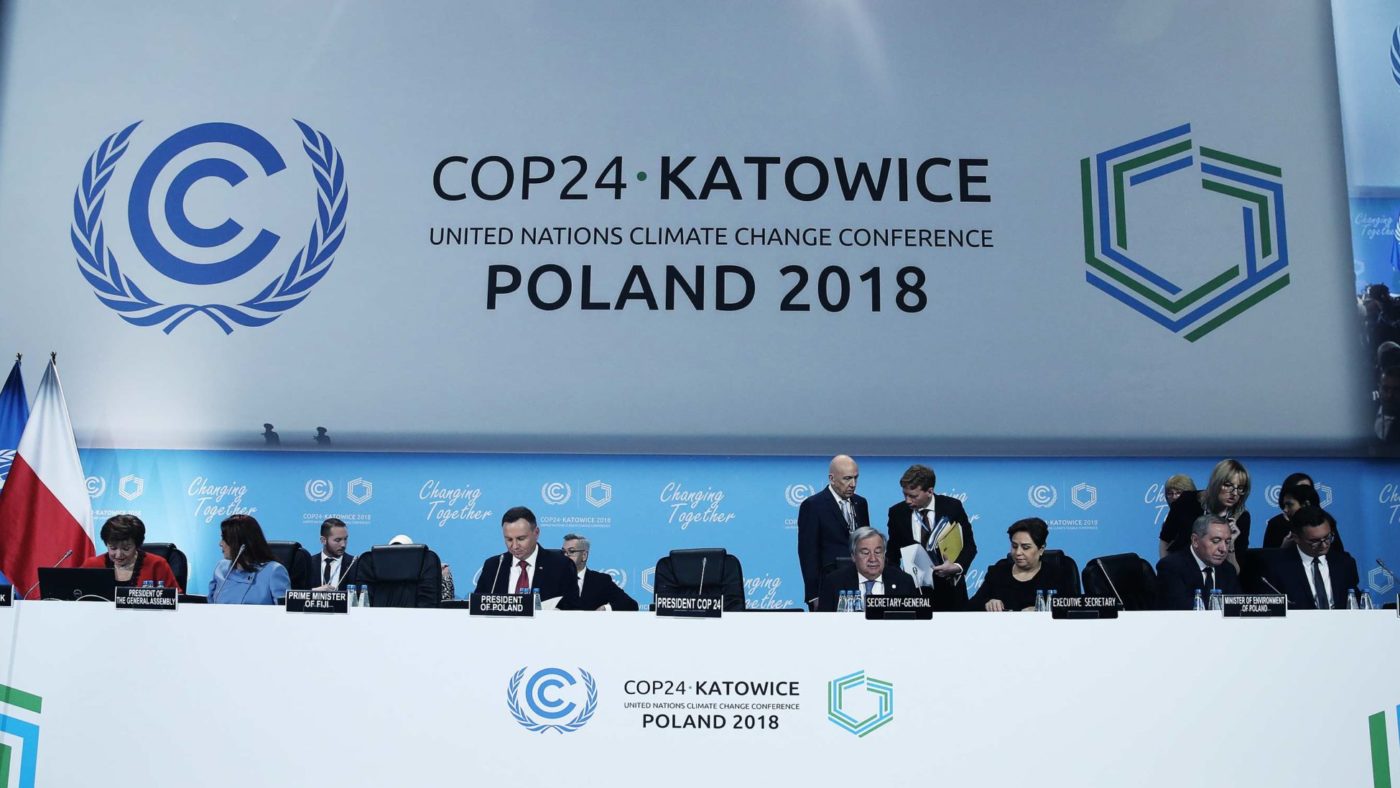The climate summit in Poland has been given a boost in recent weeks by well-timed climate change reports shaping the news agenda. But if we dig deeper than most of the media did, these reports demonstrate what is wrong with global warming policy discussion.
The first report was by the United Nations’ panel of climate scientists, the IPCC. It was widely reported as urging the world to draconically cut emissions to keep temperature rises below 1.5 degrees Celsius.
In fact, politicians set themselves the target of keeping temperature rises below 1.5 degrees when they wrote the preamble to the Paris climate change agreement in 2015, guided by public relations concerns.
Years later, they asked the IPCC to find out what it would take to achieve this overly ambitious target. The scientists, who have promised to deliver “policy-relevant but not policy-prescriptive information” obligingly said it was technically feasible, but would “require rapid, far-reaching and unprecedented changes in all aspects of society”. In other words, reaching 1.5°C is simply infeasible and unrealistic. Yet, the report is now being used by campaigners, politicians, and even activist IPCC scientists to claim that we need to make extreme carbon cuts.
It would be a bit like asking NASA what it would take to move the entire human population to Mars. NASA would obligingly tell us that it is technically feasible, but would require far-reaching changes to our current priorities and unprecedented investments in space technology. Campaigners would be similarly wrong in saying “see, NASA is telling us, we all need to go to Mars”.
The next climate report to be seized upon by activists with an axe to grind was the US Climate Assessment. Activist and climate scientist Michael Mann told CNN the assessment’s predictions were reflected in “unprecedented weather extremes” of droughts and floods.
Actually, the assessment – and science – tell a different story: “Drought statistics over the entire contiguous US have declined,” the report finds, reminding us that the 1930s Dust Bowl era was far worse, and accepting the IPCC finding on flooding which “did not attribute changes in flooding to anthropogenic [human] influence nor report detectable changes in flooding magnitude, duration, or frequency.”
Many media, including CNN and the New York Times reported that the report suggested “climate change will shrink [the US] economy” by 10 per cent.
But it will not shrink. The UN’s climate scenarios actually envision US GDP per capita will more-than-triple, so this reduction would come from GDP 300 per cent higher than today.
Worse, the 10 per cent figure assumes temperatures will increase about 7.8°C by the end of the century. The US climate assessment estimates that with no significant climate action, US temperatures will increase by between 2.8 and 4.8°C. Using the high-end estimate of 4.8°C, the damage would be only half as big at five per cent.
Even 4.8°C is bizarrely pessimistic: it stems from an extreme, high-emissions scenario that one recent study finds uses more fossil fuels than is physically plausible and another rejects as “exceptionally unlikely”.
Moreover, two-thirds of the purported 10 per cent damage comes from assuming that as the US gets hotter, more and more people will die from heat.
It is true more people die when it is unusually hot, but lives are not shorter in hotter places. (Otherwise, everyone would move from Texas to Alaska). Studies of migrants show people adapt quickly, within weeks. They also take actions like getting an air conditioner or adapting their houses that reduce their risk of overheating.
Over an 80-year period, it’s ludicrous to assume none of this will happen, and the temperature-mortality relationship remains utterly constant.
So, the key media take-away from this report – that warming will shrink the economy by 10 per cent — is misinterpreted and wildly exaggerated.
Besides the alarmist reporting, what these two reports have in common is that they ignore the costs of climate change policies.
Using the best individual and collectively peer-reviewed economic models, the total cost of Paris – through slower GDP growth from higher energy costs – will reach $1-2 trillion every year from 2030. (This is for a climate effect that will be a negligible 0.05°C reduction or less by 2100.)
It’s so expensive because green energy isn’t ready to replace fossil fuels at scale. Nations are using expensive subsidies and other policies to force immature green technologies on consumers and businesses. We need to change course. The smart option, backed by economic science, is to adopt a technology-led policy. This means investing far more into green energy research and development. Rather than forcing the rollout of immature energy sources, we need to ensure that green energy can out-compete fossil fuels.
Sadly, with the drum-beat of activists demanding action, politicians in Poland are on track to sign up for further expensive promises that will do very little.


